White Walls: The Canvas of Organic Modern Design
In the ever-evolving world of interior design, white walls have remained a timeless foundation for creating stunning spaces. This is particularly true when it comes to organic modern design, which often revolves around a somewhat minimalist aesthetic with white, neutral, and earth-toned walls, warmed and personalized with decor and furniture made from natural materials such as wood, stone, and metal. The allure of white walls in organic modern design continues to captivate homeowners and designers alike. This versatile backdrop serves as the perfect canvas for showcasing the natural elements, textures, and carefully curated decor pieces that define the organic modern aesthetic.
Did you know that rooms with white walls are perceived as larger? It’s true! White walls not only create an illusion of spaciousness but also provide a clean slate for crafting serene, nature-inspired interiors that feel both fresh and timeless. In this comprehensive guide, we’ll explore how to harness the power of white walls in organic modern design, transforming your living spaces into sophisticated havens that seamlessly blend contemporary style with natural beauty.
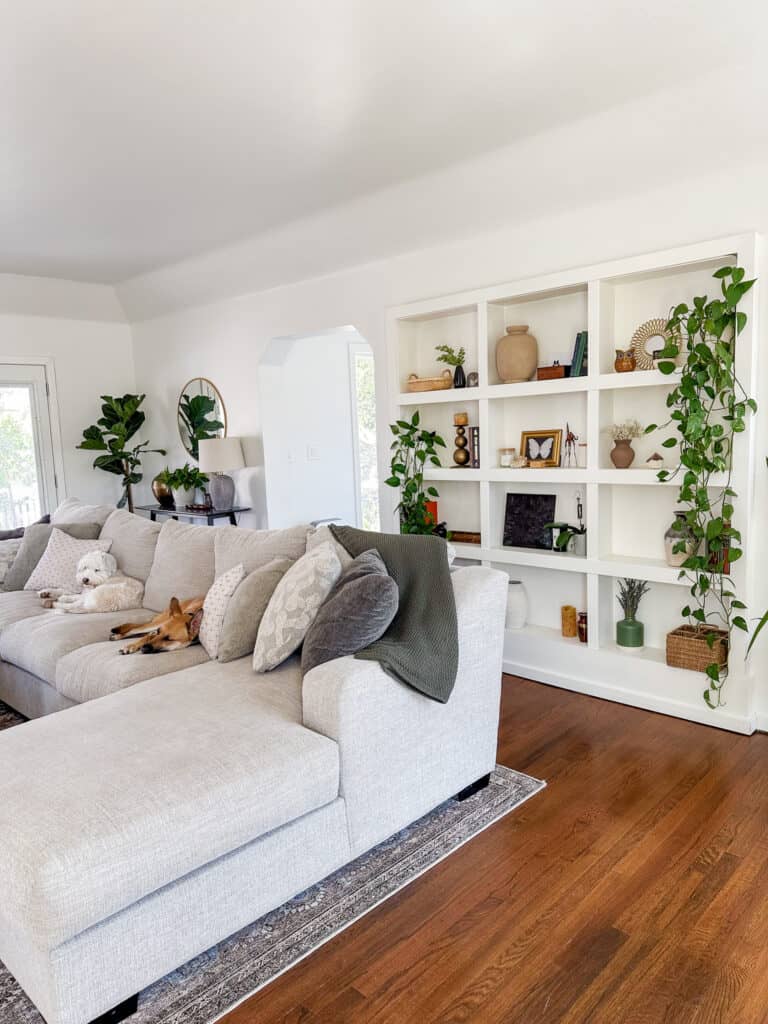
Just a Little Color Theory to Get Us Started
Humor me, I promise this will be quick. A basic understanding of color theory is vital in design and will go a long way to help you decorate your home. And if you’re reading an article like this, then I assume you already know that there are thousands of shades of white paint and you are trying to decide which shade will work best in your space.
Well, unfortunately, I can’t tell which shade will work best in your home, but I can give you the tools to make that decision yourself.
When decorating your home, one of your first considerations might be the color palette you would like to achieve. Do you want the space to be bright and cheery in coastal-themed whites and blues? Or do you want and cozy, earthy haven with olive greens and taupes?
White walls make an excellent backdrop for almost any decor style. But the particular white paint you should use will depend on the overall color palette of the furniture and decor and the feeling you want to create in the space.
Understanding the basics of color theory will shed a little light (science pun very much intended) on the color paint color that will work best in your space.
Color Theory 101: Hue, Tine, Tones, and Shades
Color theory is the study of how colors interact and the effects they have on perception and emotions. It involves understanding the color wheel, which shows the relationships between primary, secondary, and tertiary colors. Additionally, color theory explores the psychological impacts of colors, such as how blue can evoke calmness while red can stimulate energy and excitement.
Even though I studied both art and science in college, I honestly have a hard time remembering how color vision works. But after brushing up a little, I think I have it down (hopefully).
Colors that are visible to the human eye are the result of reflected light from the Visible Light Spectrum. The Visible Light Spectrum contains all the colors of the rainbow. The color of an object that we perceive, is the color of light that is reflected off that object. All other colors of the Visible Light Spectrum are absorbed by that object and therefore not perceived by the human eye.
If we see a ball as yellow, that means red, orange, green, blue, and violet we absorbed and yellow is reflected.
This is where I get a little confused, but I think I have it (please let me know if I don’t!). In terms of our vision, seeing a white object means that none of the colors are absorbed by that object. In fact, they all reflect and combine, causing us to perceive the color white. So when it comes to vision or light, white is the presence of color (all wavelengths of visible light).
But when it comes to paint, pure white is the absence of color (pigment). Most white paints used for interiors are not pure white but are actually very diluted tints. Or pure white plus pigment. It is those added pigments that give different whites their different appearances.
Color Theory + Paint Colors
So when selecting white paint, be sure to pay attention to the undertones and consider the color palette and overall feeling you want to evoke. There are many other factors that affect how white paint will look in a room and we’ll get into all of that below!
When I am paint shopping, I like to grab a card for the truest, most pure white I can find and then use that as a baseline to detect the undertones in different shades.
For the purposes of this article, we are only concerned with tints (pure white mixed with color). But in general, it might be useful to understand the terms hue (pure color), shades (color + black), and tones (color + grey). I found this wonderful graphic from Color With Leo to demonstrate.
Note: in color theory, a tint is color + white and a shade is color + black, the terms are used a little differently in the colloquial sense. When speaking of different colors of white paint (or any hue) most people refer to them as “shades of white”, and I’ll use both terms in this article to talk about different white paints.
The Power of White in Organic Modern Design
To truly appreciate the impact of white walls in organic modern design, it’s essential to understand the multifaceted role they play in shaping our living environments.
Understanding Different Shades of White and Their Effects
White is far from a one-dimensional color. As noted above, there’s a vast spectrum of white shades, each with its own unique undertones and characteristics. From crisp, cool whites to warm, creamy hues, the choice of white can significantly influence the overall ambiance of a space.
Cool whites, with their blue or gray undertones, create a sense of clarity and freshness. These shades work particularly well in rooms with plenty of natural light, enhancing the bright, airy feel that’s so central to organic modern design. On the other hand, warm whites with yellow or beige undertones can add a subtle coziness to a space, making them ideal for creating inviting living areas or bedrooms.
How White Walls Enhance Natural Light and Spaciousness
One of the most significant advantages of white walls in organic modern design is their ability to maximize natural light. White surfaces reflect light rather than absorb it, effectively bouncing daylight deeper into a room. This not only makes spaces feel brighter but also creates the illusion of expanded dimensions.
In smaller rooms or areas with limited natural light, white walls can work wonders in opening up the space. They blur the boundaries between walls and ceilings, making rooms feel more expansive and airy – a key characteristic of organic modern interiors.
I saw this first hand when we painted our main floor bedrooms, main hallway, and living and dining room white a few months ago. When we moved our house last year, every single room was painted in the brown shade you see below or in a dark cool grey. Both walls and ceilings. This was particularly bad in the living room where there is no built-in overhead light and we have only lamps and natural light to rely on. It felt so dark and gloomy, especially during winter! Painting the walls white made such an incredible difference in both the light and overall feeling. Our home feels bright and cozy now.
Simply painting the walls white in our very small upstairs bathroom did so much to brighten up the previously dark and dreary space!
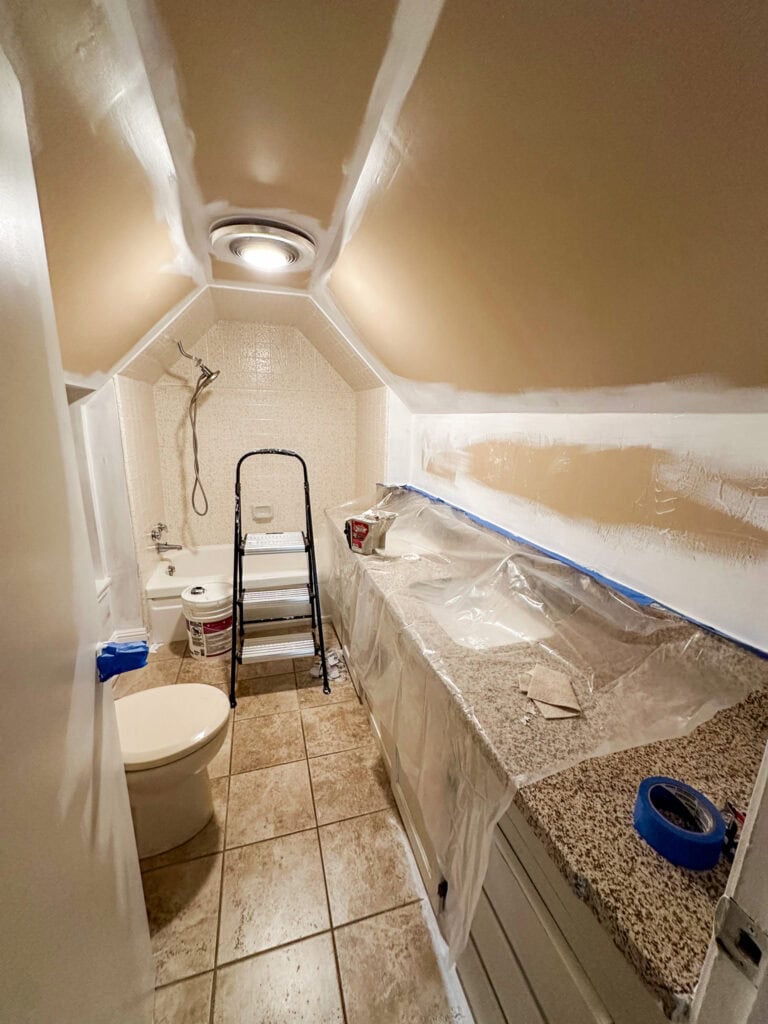
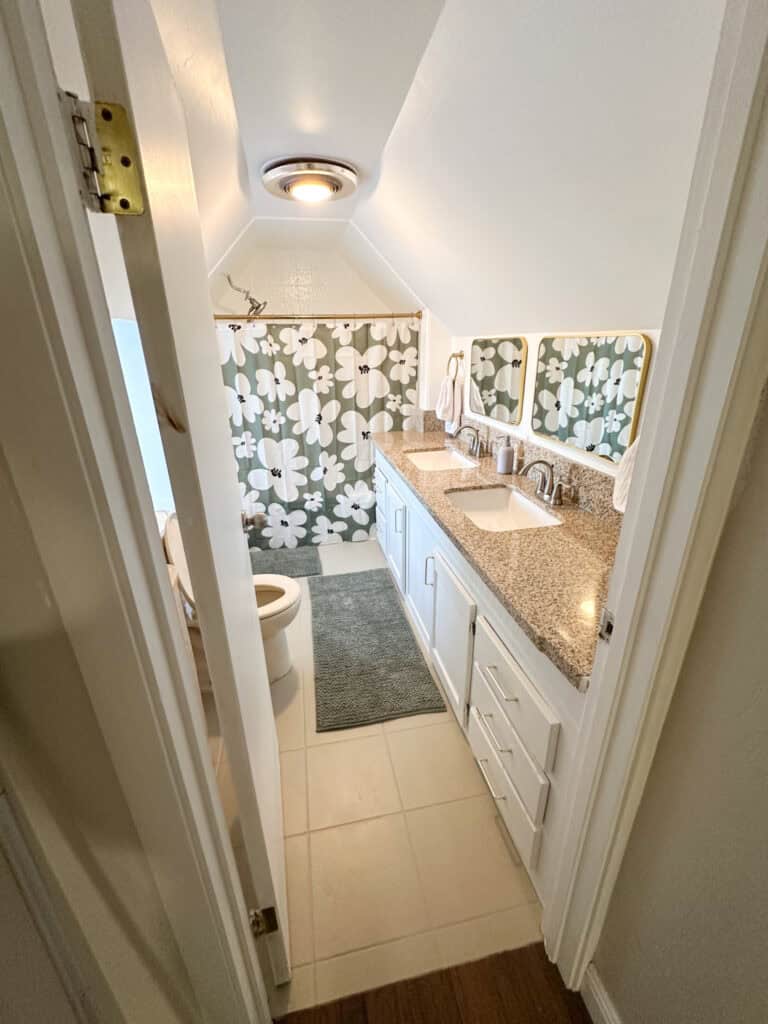
The Psychology of White in Creating Calm, Focused Environments
White has long been associated with cleanliness, purity, and simplicity. In the context of organic modern design, white walls contribute to a sense of serenity and mindfulness partly because they sort of disappear from focus. They provide a visual respite from the chaos of the outside world, allowing the mind to relax and focus. And they allow you to control which decor items will be the main focal points of the room.
This calming effect makes white walls particularly beneficial in spaces dedicated to relaxation or concentration, such as bedrooms, meditation areas, or home offices. By reducing visual clutter, white walls in organic modern design create an environment conducive to both rest and productivity.
Current Trends in White Wall Treatments for 2024
In 2024, several exciting trends are emerging in the use of white walls in organic modern design:
- Textured whites: Designers are increasingly experimenting with textured white wall treatments, from subtle plaster finishes to more pronounced relief patterns. These add depth and interest to white walls without compromising their neutral quality.
- Layered whites: Combining different shades of white within a single space is gaining popularity. This approach adds subtle dimension and prevents white interiors from feeling flat or sterile.
- White-on-white patterns: Subtle patterns created using different finishes or textures of white are being used to add visual interest while maintaining a monochromatic palette.
- Organic shapes: White walls serve as a backdrop for organic, curved architectural elements, reflecting the fluid forms found in nature.
Choosing the Right White for Your Space
Selecting the perfect white for your organic modern interior is crucial in setting the right tone and atmosphere. And it’s really hard to know which shade(s) will look best in your space! Looking for inspiration on Pinterest might give you a starting point when it comes to selecting a color, but paint colors look different in different rooms and at different times of day. Have you ever fallen in love with a living room paint color you saw on Pinterest only to discover it looks yellow and dirty in your space? Or maybe you love the warm cozy white walls of your friend’s mid-century modern style home, but in your modern home with a grey sofa, the same color looks yellow and unsettling? Why is that?
The way the human eye perceives color is complex. We don’t see things in isolation. At any given moment we are taking in and processing a ton of information in the marvelous supercomputer that is our brains. The paint color will be affected by the light conditions and the colors of objects in the surrounding environment.
Color Depends on Context
So the same color can look very different in two different spaces. In college, I took a color theory class and one of our assignments was to make color block art like this to demonstrate this concept. I didn’t make the following awesome illustrations. I found them here.
The color of the rectangle in the center of these squares looks different, right? To me, the one on the left looks like pinkish mauvy purple, while the one on the right looks like a blueish lavender tone.

Would you believe they are actually the same color?

Wild, right? When the two center rectangles are connected, we can see they are in fact the same color. They only appeared different because of their environments.
What’s the point of this? Other than the fact that it’s really cool? All of this shows why it is very hard to choose a paint color based on the way it looks in someone else’s home or in the hardware store.
The solution? Samples! Get paint samples and test in your space! More on the below.
Here’s How to Navigate the World of White Paint:
You’ll need to consider tone (warm or cool), undertone, and sheen.
Warm whites vs. cool whites: What’s best for your room?
The choice between warm and cool whites depends on several factors, including the room’s function, natural light exposure, and your personal preferences. You can choose a shade that will be balanced by the natural light in the room i.e. choosing a cool shade in a south-facing room. Or you can choose a shade that will be enhanced by the room’s natural light. Choosing a warm white in a south-facing room with lots of natural light will create a warm, cozy, and romantic atmosphere.
Warm whites work well in:
- North-facing rooms that receive cooler light
- Spaces where you want to create a cozy, inviting atmosphere
- Rooms with lots of natural wood elements
Cool whites are ideal for:
- South-facing rooms with abundant warm light
- Spaces where you want to maximize brightness
- Modern, minimalist interiors
Considering Undertones in White Paint
When choosing white paint for your organic modern design, pay close attention to undertones. We discussed this at length above, so I’ll keep it short. Hold paint swatches against a pure white background to reveal their true hues. Common undertones in white paints include:
- Blue: Creates a crisp, clean look
- Green: Adds a fresh, natural feel
- Yellow: Brings warmth and softness
- Gray: Offers a modern, sophisticated touch
Matte, Eggshell, Satin or Glossy: Choosing the Right Finish
The finish of your white walls can significantly impact the overall look and feel of your organic modern space:
- Matte: Provides a soft, velvety appearance and hides imperfections well
- Eggshell: Offers a subtle sheen and is more durable than matte
- Satin: offers more sheen than eggshell and is easy to clean (I tend to go for satin in most areas because with kids and dogs, I need the walls to be easy to clean)
- Glossy/ Semi-gloss: Reflects more light but can highlight wall imperfections
- High-gloss: high sheen, not typically used on walls. Best for baseboards, trim, and doors/ door frames.
For most organic modern interiors, a matte or eggshell finish is preferable, as they align better with the natural, understated aesthetic of the style. But if you have kids or dogs, you’ll probably want to stick with eggshell or satin for easier cleaning.
Pin this guide I made to save for your next paint project!
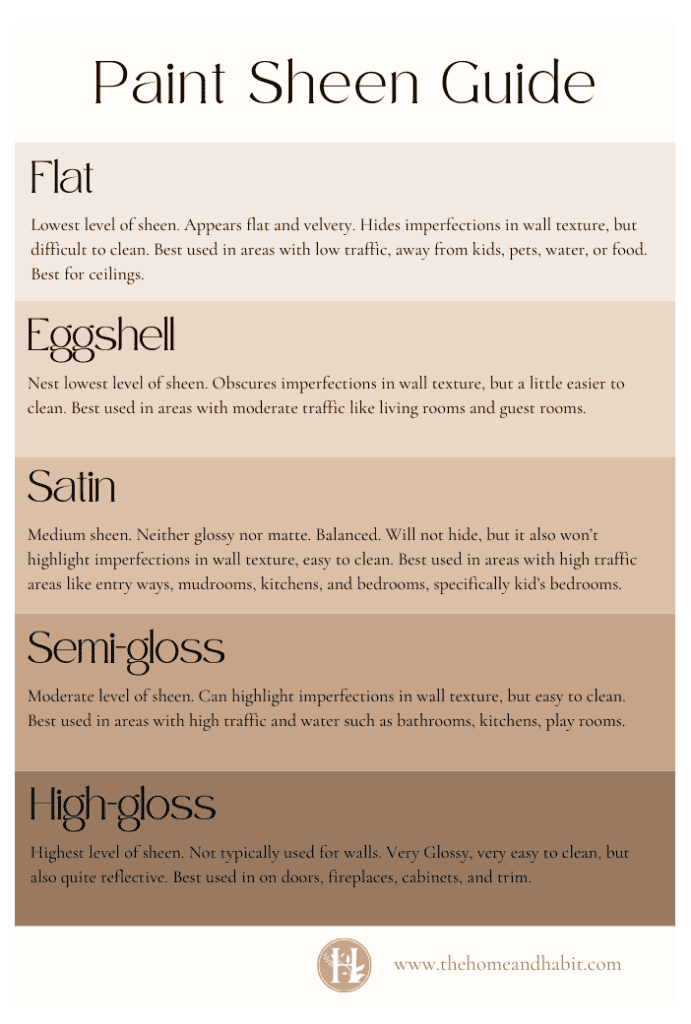
Testing Whites: The Importance of Lighting and Sample Swatches
Before committing to a white, it’s crucial to test it in your space. You can do this by painting large swatches directly on different walls and observing them at various times of the day. Or, you can paint large pieces of cardboard and tape them to the walls around the house. I prefer this method. Less mess and you don’t have to worry about the swatches showing through and affecting the final color you choose.
Either way, observe your swatches throughout the day. Natural and artificial lighting can dramatically alter how a white appears, so take the time to ensure your chosen shade maintains its desired effect throughout the day.
Textures and Materials to Complement White Walls
White walls in organic modern design serve as a perfect backdrop for showcasing a variety of textures and materials. The key is to create a harmonious balance that enhances the natural, serene aesthetic of the style.
Natural Wood Elements: Bringing Warmth to White Spaces
Wood is a cornerstone of organic modern design, and it pairs beautifully with white walls. The warmth and texture of wood provide a striking contrast to the cool, smooth surface of white walls. Consider incorporating:
- Hardwood flooring
- Exposed wooden beams
- Wooden furniture pieces ( I love mixing wood tones in our organic modern/ modern vintage home)
- Decorative wooden accents
The interplay between white walls and wood creates a sense of balance, grounding the space while maintaining an airy, open feel.
I found this wooden vase and this bowl at a thrift store. I also found these wood-framed canvases that had some farmhouse word art on them at a thrift store, and I painted them.
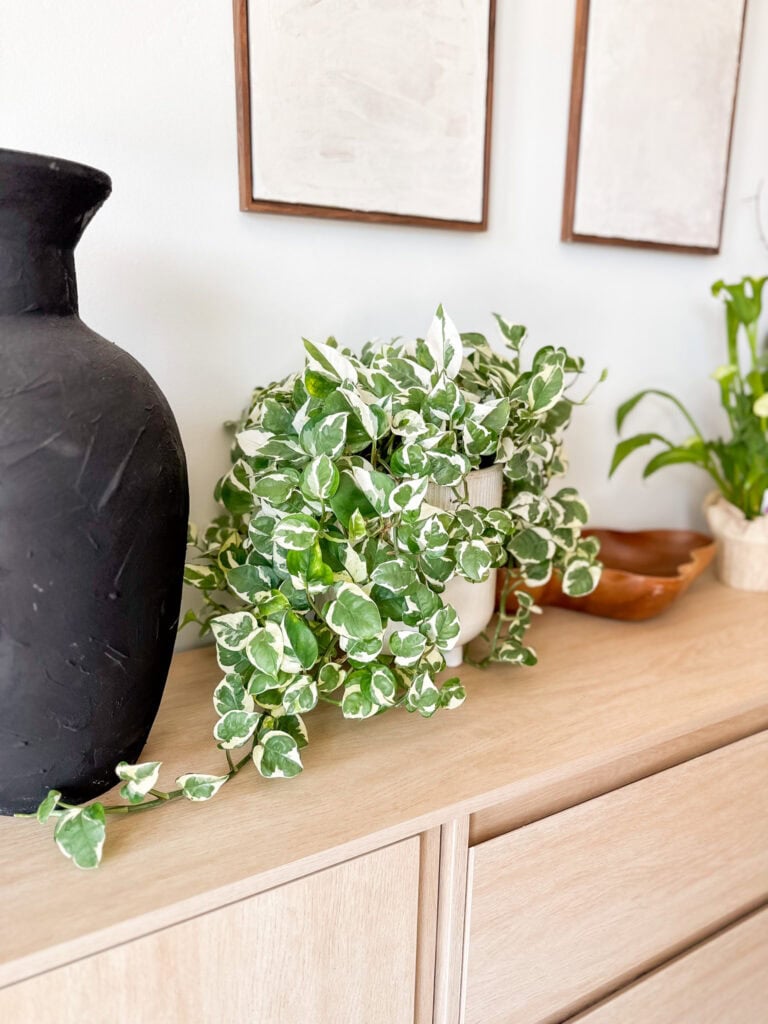
Stone and Concrete Accents for Organic Contrast
Stone and concrete elements add an earthy, organic touch to white-walled spaces. These materials introduce subtle texture and visual interest without overwhelming the serene atmosphere. Consider:
- Stone feature walls
- Concrete flooring
- Stone or concrete countertops
- Decorative stone sculptures or accents
The cool tones of stone and concrete complement white walls beautifully, reinforcing the connection to nature that is central to organic modern design.
Incorporating Metals: From Brushed Brass to Blackened Steel
Metallic accents can add a touch of sophistication and visual interest to white organic modern interiors. The key is to use metals sparingly and thoughtfully: look for understated finishes like:
- Brushed brass light fixtures
- Blackened steel window frames
- Copper decorative objects
- Stainless steel kitchen appliances
- Patinaed antique pieces
These metallic elements create points of interest and add depth to the space, preventing the white walls from feeling too stark or clinical.
Textiles and Fibers: Adding Depth and Coziness to White Rooms
Textiles play a crucial role in softening the clean lines of white walls in organic modern design. They add texture, warmth, and comfort to the space. Consider incorporating:
- Natural fiber rugs (jute, sisal, wool)
- Linen curtains or Roman shades
- Cotton or linen upholstery
- Textured throw pillows and blankets
By layering these textiles, you can create a cozy, inviting atmosphere that balances the crisp cleanliness of white walls.

Color Accents in a White Organic Modern Space
While white walls provide a neutral foundation, strategic use of color can enhance the organic modern aesthetic and create visual interest.
Using Earth Tones to Ground White Walls
Earth tones are a natural fit for organic modern design, complementing white walls without overwhelming them. Consider incorporating:
- Warm browns
- Soft greens
- Muted terracottas
- Gentle beiges
These colors can be introduced through furniture, textiles, or artwork, adding depth and warmth to the space while maintaining the serene atmosphere created by white walls.
Incorporating Plants and Greenery for Natural Color Pops
Plants are an essential element in organic modern design, bringing life and color to white-walled spaces.
Consider:
- Large statement plants like fiddle leaf figs or olive trees
- Hanging plants to add vertical interest
- Succulents for low-maintenance greenery
- Herb gardens in the kitchen for both aesthetics and functionality
Houseplants play a big role in my home decor style. They not only add visual interest, they help keep the air in our homes clean and promote feelings of focus and well-being. Read my full article on my favorite air-purifying houseplants below!
Bold Color Statements: When and How to Use Them
While organic modern design typically favors a neutral palette, occasional bold color statements can add personality and energy to white-walled spaces. The key is to use strong colors sparingly and intentionally:
- A vibrant piece of artwork
- A colorful accent chair
- Bold-hued throw pillows or blankets
- Colorful ceramics or glassware
These pops of color create focal points and prevent the space from feeling too monochromatic or sterile.
Creating Depth With Monochromatic Schemes
For a sophisticated, cohesive look, consider working with a monochromatic color scheme. This approach involves using various shades and tones of a single color family alongside your white walls. For example:
- Shades of gray, from light to charcoal
- Variations of beige and tan
- Different intensities of blue or green
This technique adds depth and interest to the space while maintaining a serene, harmonious atmosphere.
Lighting Design for White-Walled Spaces
Proper lighting is crucial in showcasing the beauty of white walls in organic modern design. It can enhance the spaciousness of the room, highlight textures, and create the desired ambiance.
Maximizing Natural Light in White Interiors
Natural light is a key element in organic modern design, and white walls help maximize its impact. To make the most of natural light:
- Keep windows unobstructed or use sheer curtains
- Use mirrors to reflect light deeper into the space
- Consider skylights or solar tubes for rooms with limited windows
- Opt for glass doors to allow light to flow between spaces
Warm vs. Cool Artificial Lighting in White Rooms
The color temperature of your artificial lighting can significantly affect how your white walls appear:
- Warm lighting (2700K-3000K) creates a cozy, inviting atmosphere
- Cool lighting (3500K-4100K) enhances the crispness of white walls
- Daylight bulbs (5000K-6500K) can make whites appear brighter and cleaner
Choose lighting temperatures that complement your chosen shade of white and the desired mood of the space.
Creating ambiance with dimmers and layered lighting
My husband is into Smart lightbulbs and our living room lamps (4 of them because there is no overhead light) are connected to one switch with a dimmer and the ability to change the color of the light all the way from red, bright white, to warm white (my favorite), to blue.
Layered lighting allows you to adjust the atmosphere of your white-walled organic modern space throughout the day:
- Ambient lighting provides overall illumination
- Task lighting focuses light where it’s needed for specific activities
- Accent lighting highlights architectural features or artwork
Incorporate dimmers to control light levels and create the perfect ambiance for any time of day or activity.
Statement fixtures as focal points against white backdrops
White walls provide the perfect canvas for showcasing statement lighting fixtures. Consider:
- Large pendant lights in natural materials like rattan or wood
- Sculptural floor lamps
- Unique wall sconces that double as art pieces
- Chandeliers with organic shapes or materials
These fixtures can serve as functional art, adding personality and visual interest to your white organic modern space.
Furniture and Decor for White Organic Modern Interiors
Choosing the right furniture and decor is crucial in bringing your white-walled organic modern space to life. The key is to select pieces that complement the serene backdrop while adding warmth, texture, and personality.
Selecting furniture that complements white walls
When choosing furniture for your organic modern interior:
- Opt for pieces with clean lines and organic shapes
- Choose natural materials like wood and stone
- Consider furniture with textured upholstery to add depth
- Mix light and dark pieces to create contrast against white walls (I have a mix of walnut, white oak, and black painted furniture)
Remember, the furniture should enhance the airy feel of the space, not overwhelm it.
Using artwork to add personality to white spaces
Artwork plays a vital role in organic modern design, adding color, texture, and personal expression to white-walled rooms:
- Large-scale abstract pieces can create a dramatic focal point
- Natural photography or botanical prints reinforce the organic theme
- Textured wall hangings add warmth and have acoustic benefits
- Sculptural pieces can add three-dimensional interest
Choose artwork that resonates with you and complements the overall aesthetic of your space. I love thrifting and local art shows, craft fairs, and flea markets to find artwork.
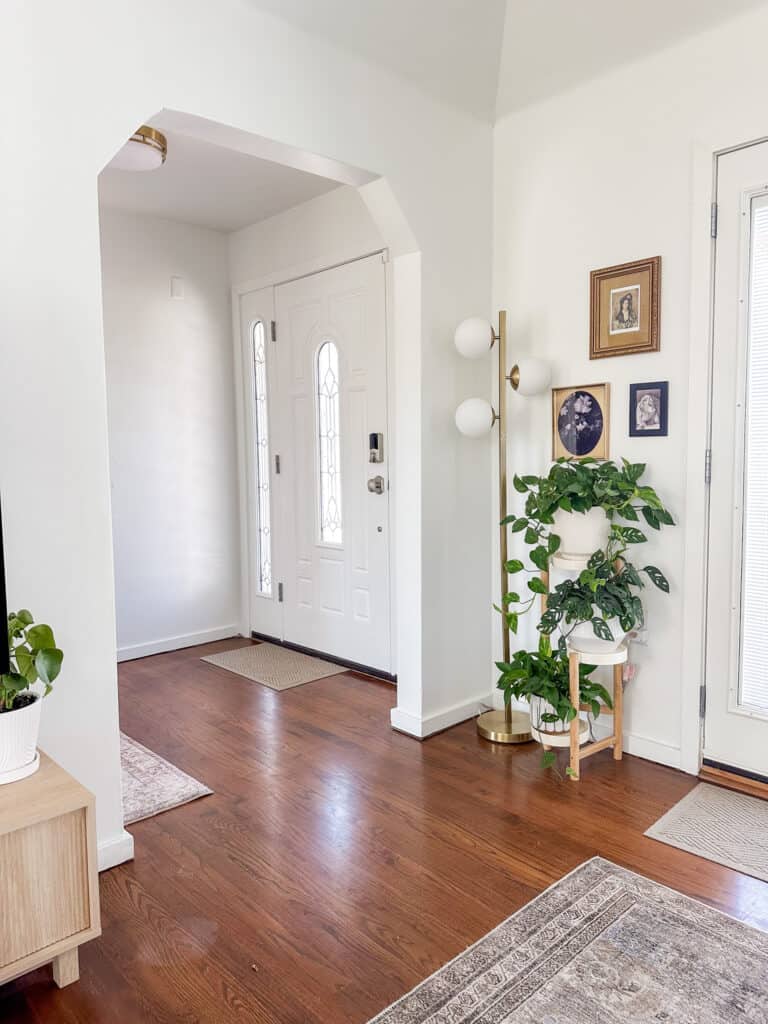
Incorporating Mirrors to EnhanceLight and Space
Mirrors are a secret weapon in making the most of white walls and for brightening dark spaces. We have a large mirror in the corner of our living room that is furthest away from the large windows of the dining room.
- Large mirrors can visually double the size of a room
- Mirrored furniture adds depth without visual clutter
- Groupings of smaller mirrors create interesting wall features
- Strategically placed mirrors can reflect views and light
Use mirrors thoughtfully to enhance the bright, open feel of your organic modern interior.
Balancing Minimalism and Personal Style With Thoughtful Decor Pieces
While organic modern design leans towards minimalism, carefully chosen decor can add character and warmth:
- Natural objects like driftwood, stones, or shells
- Handcrafted ceramics or glassware
- Woven baskets for storage and texture
- Books with beautiful covers displayed on coffee tables or shelves
The key is to select pieces that have meaning or bring joy, rather than cluttering the space with unnecessary items.
White Walls in Different Living Areas
Each room in your home presents unique opportunities and challenges when it comes to incorporating white walls in organic modern design.
Living Room: Creating aSereneYet Inviting Atmosphere
In the living room, white walls can create a bright, welcoming space perfect for relaxation and socializing:
- Use textured rugs, wood, unique decor, and art to add warmth
- Incorporate a mix of seating options with organic shapes and materials
- Add depth with layered lighting
- Use plants to bring life and color to the space
Bedroom: Designing a Tranquil White Retreat
White walls in the bedroom can contribute to a peaceful, restful environment:
- Choose warm whites for a cozy feel
- Use plush bedding and textured throws for comfort
- Incorporate natural wood furniture for warmth
- Keep decor minimal to promote relaxation
Kitchen: Balancing White With Natural Elements for Warmth
In the kitchen, white walls can create a clean, fresh look:
- Pair white walls with wooden cabinetry or accents
- Use textured tiles for backsplashes
- Incorporate plants or herbs for a touch of green
- Display colorful cookware or ceramics for visual interest
I love love love white kitchen walls with wood cabinetry. These are similar to what we are planning for our upcoming kitchen renovation.
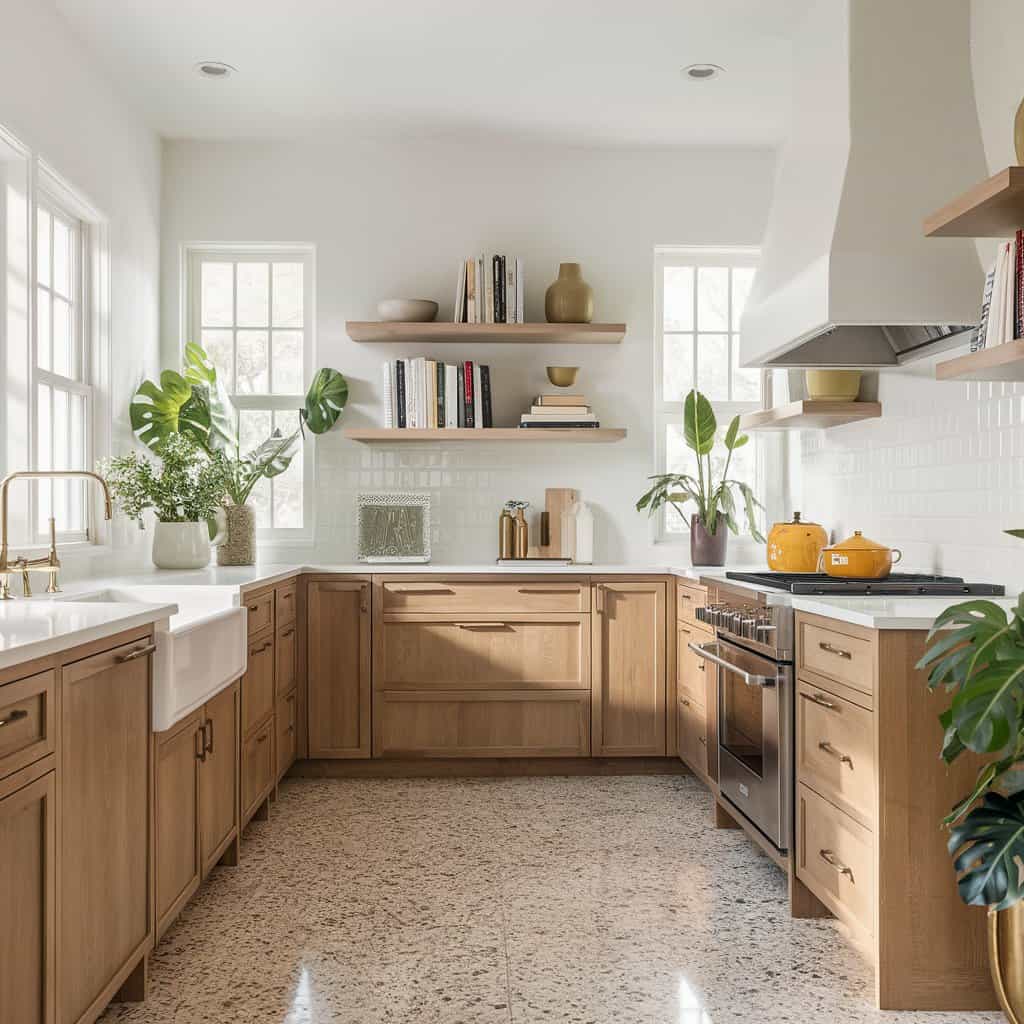
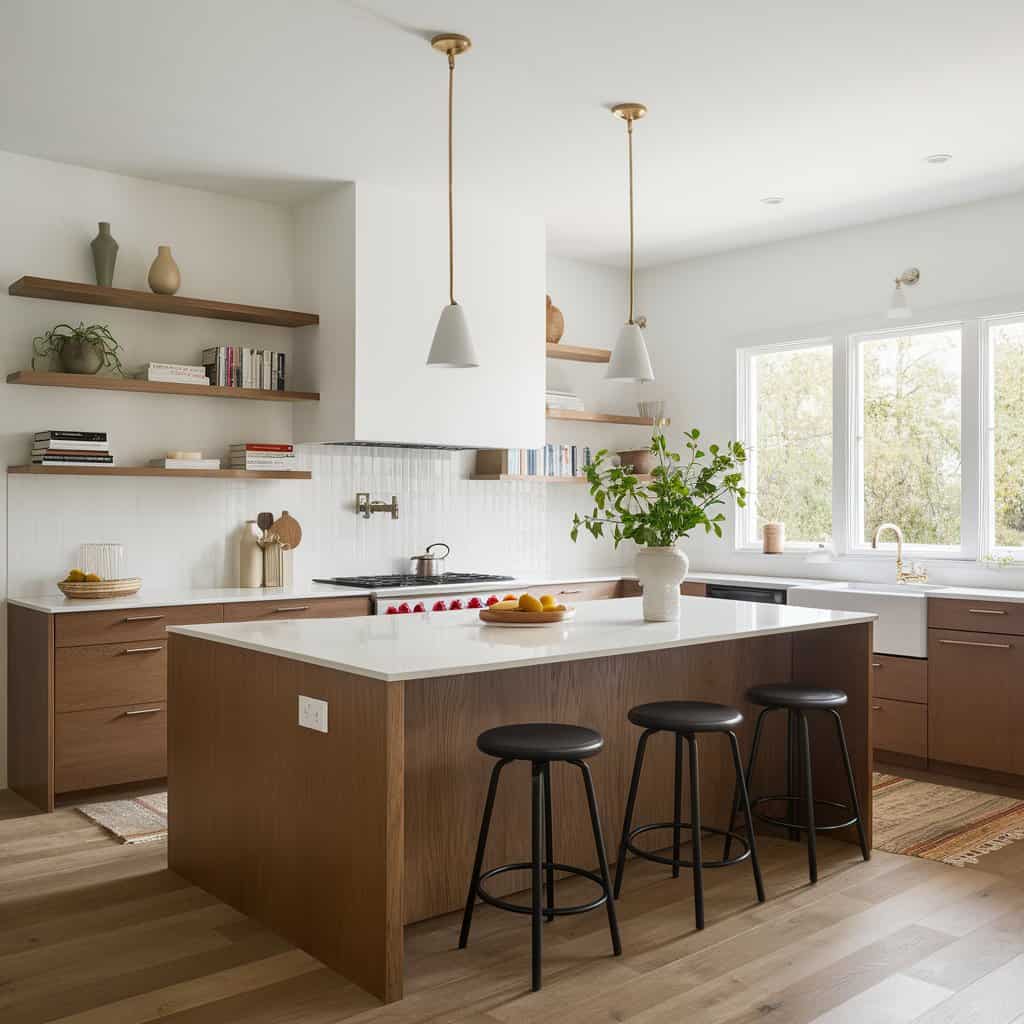
Home Office: Fostering Focus and Creativity With White Walls
White walls in a home office can help create a distraction-free environment conducive to productivity:
- Include plants to improve air quality and well-being
- Use ergonomic furniture with clean lines
- Incorporate plenty of storage to minimize clutter
- Add a pinboard or whiteboard for brainstorming
Houseplants also promote feelings of focus and happiness so add a few houseplants to your home office since that is a room many of us spend a lot of time in!
Final Thoughts + The White Paints I Use in Our Home
For all the reasons above, I can’t tell you what white paint will work in your space, but these are shades I love that work well in our home.
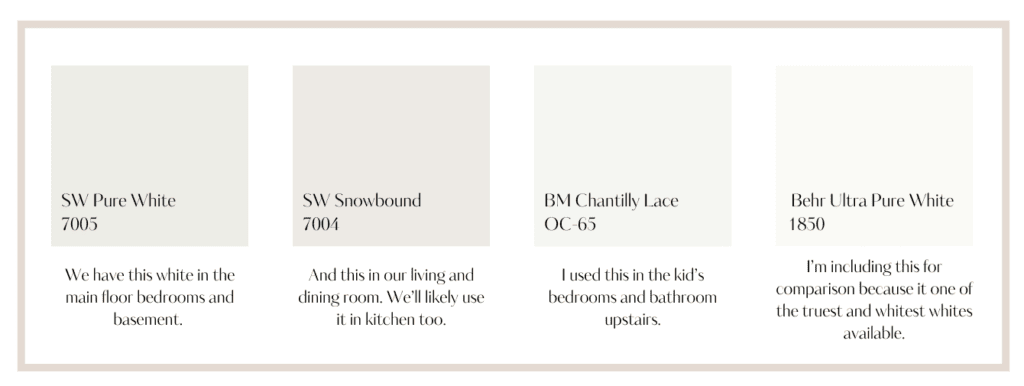
I do love white walls, especially with organic modern design. But our 80-year-old brick home is yearning for some vintage charm and I will eventually paint certain rooms and walls in our home as I find my personal home-specific home decor style for this house, which will incorporate elements of organic modern, modern vintage, and even some cottage style home decor. We painted everything white when we moved in to get rid of the oppressive and depressing brown and grey walls and I am happy with it for now while I live in the house and discover its style.
White walls in organic modern design offer a versatile foundation for creating serene, sophisticated living spaces that feel both fresh and timeless. By understanding how to choose the right white, complement it with textures and materials, and enhance it with thoughtful lighting and decor, you can transform your home into a haven of natural beauty and contemporary style.
Remember, white walls are your canvas – use them to highlight the textures, colors, and organic elements that speak to your personal style. Whether you’re designing a cozy bedroom, a bright and functional kitchen, or an inviting living space, white walls provide the perfect backdrop for your organic modern vision.
So, are you ready to paint your world white? Grab those swatches, start planning your organic accents, and watch as your home transforms into a serene, sophisticated haven. Your bright, beautiful organic modern space awaits – it’s time to bring those white walls to life!

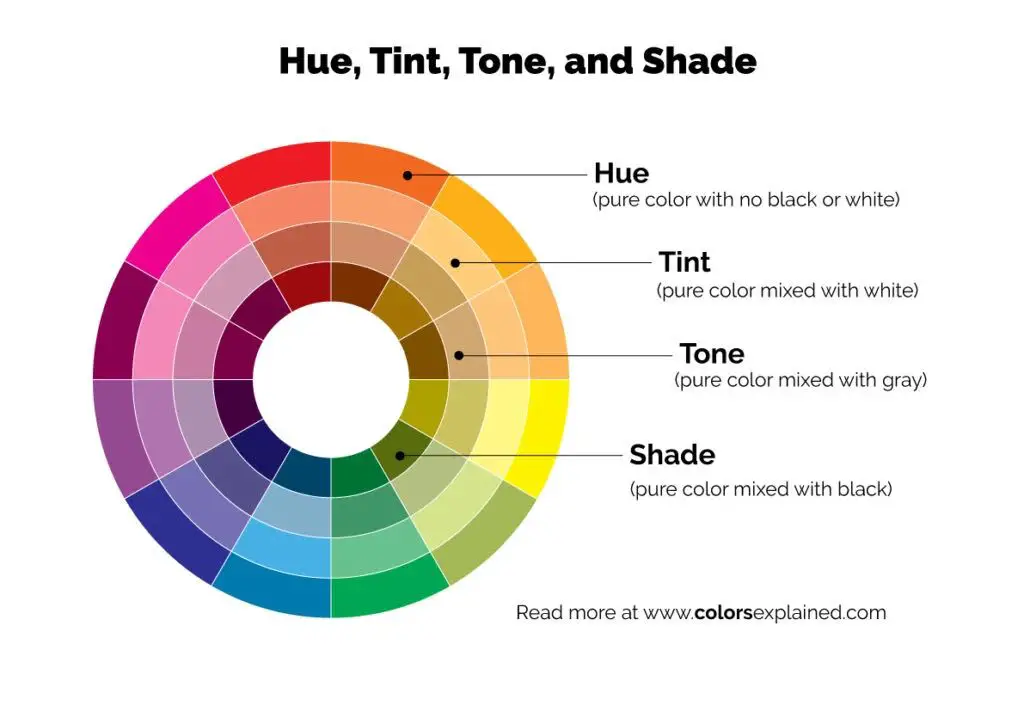
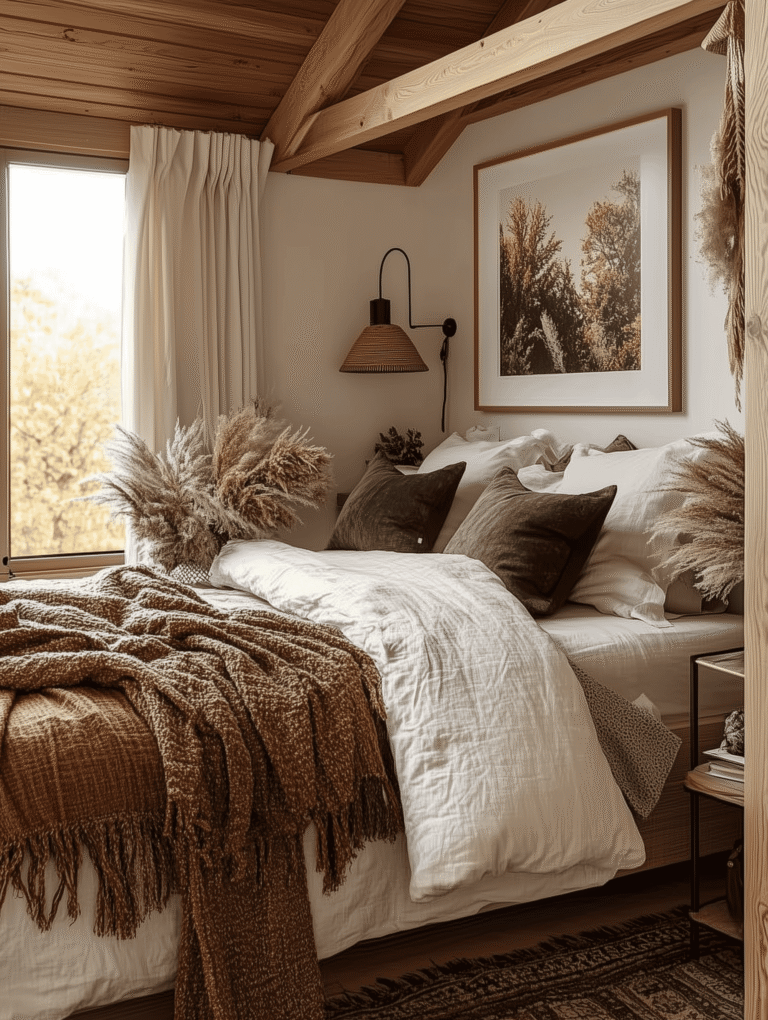
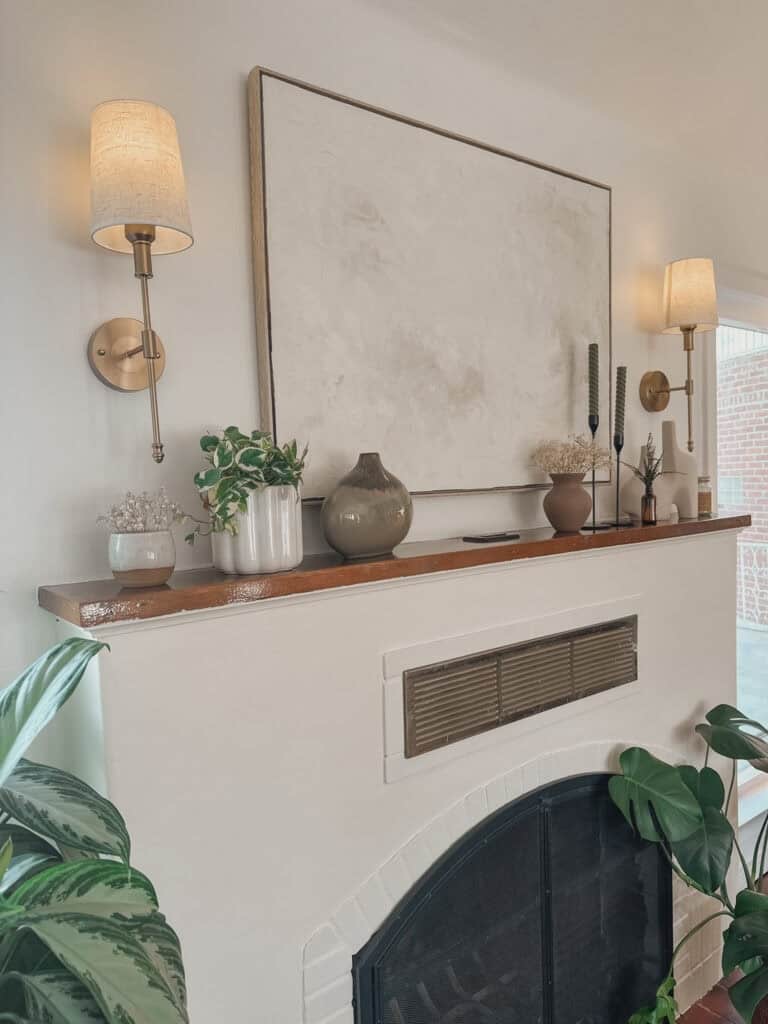
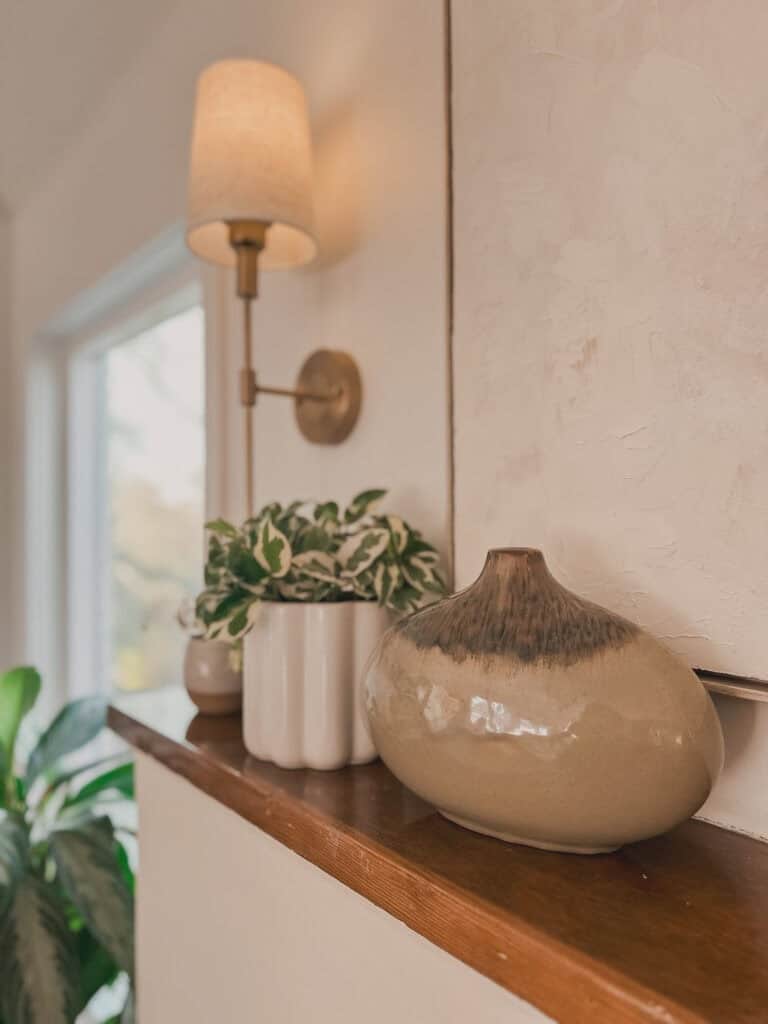
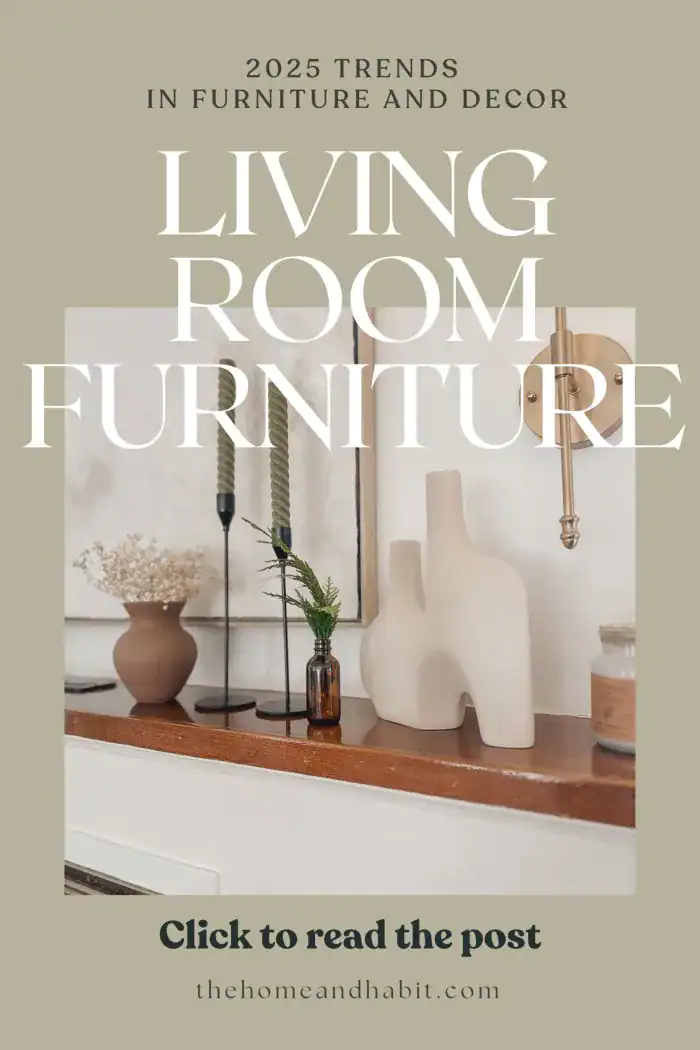
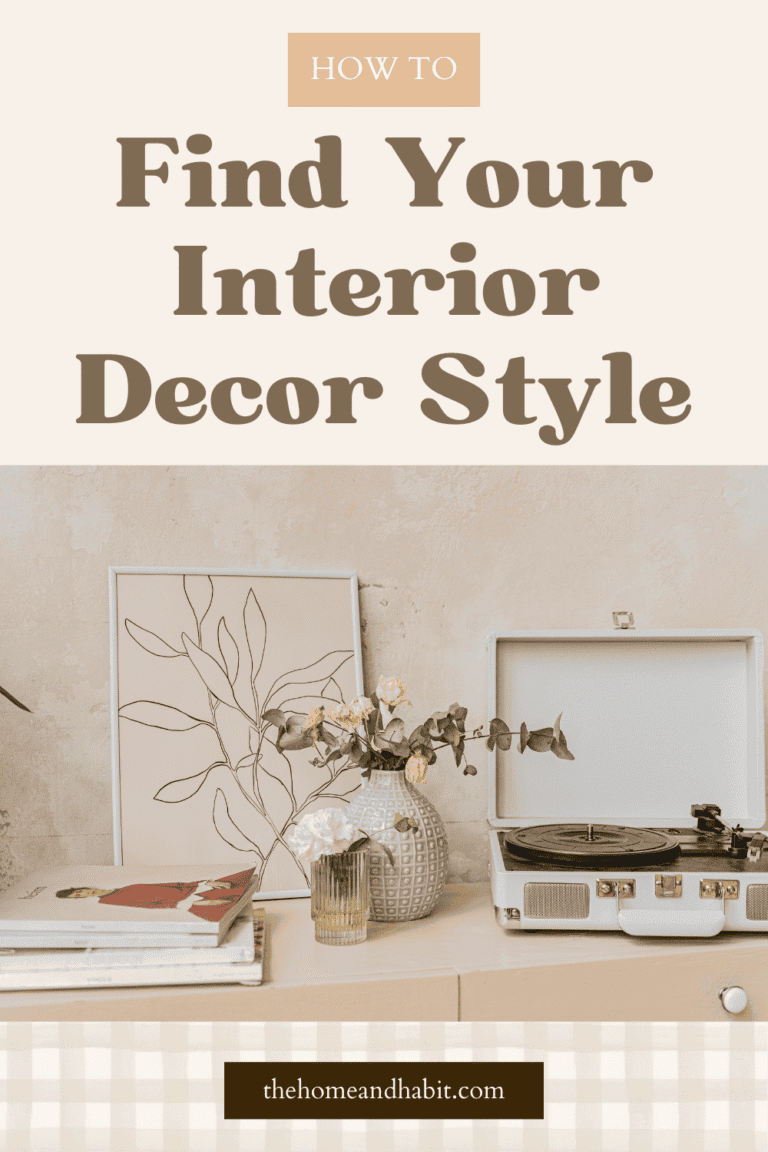
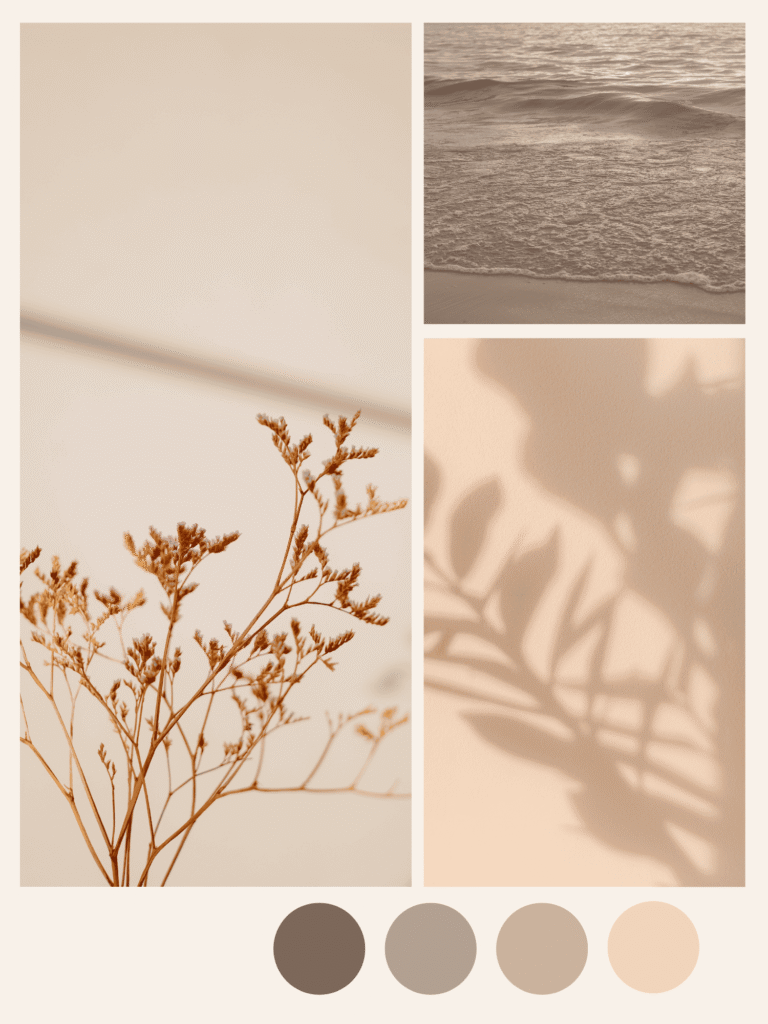
Join the List
Stay up to date & receive the latest posts in your inbox.
0 Comments